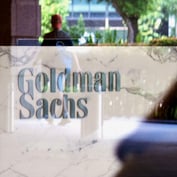Produced in cooperation with

For more information about ETFs, mutual funds and the broad array of services from Standard & Poor's, please visit MarketScopeAdvisor.com or call 877-219-1247 for a free trial.
International investing has been the subject of much discussion over the past few years. Yet the issues of what and how much to own only seem to get more puzzling for investors.
With growth in emerging markets like China and India far outpacing that of developed nations in North America and Europe, international markets have offered a compelling investment thesis that’s been backed up by strong historical performance in recent years.
When the domestic housing market collapsed in 2008, sending the U.S. dollar plummeting and the economy into recession, the steady stream of inflows to international mutual and exchange traded funds – particularly emerging market funds – turned into a flood.
Still, the very thing that drew investors to international markets in the first place – stronger growth – is now the cause of their underperformance in 2011.
Worried that their blazing growth will cause a spike in inflation, policymakers in China, India, Brazil, and elsewhere have moved to raise interest rates, and – in Brazil’s case – even levied a tax on new foreign investment. This has dimmed their attraction as investment destinations, and led to significant underperformance in the first half of the year.
 For those wondering whether to keep, sell, or buy more of the many international funds and ETFs that have appeared in recent years, Standard and Poor’s International Equity Strategist Alec Young says the issue mostly comes down to an investor’s desired time horizon.
For those wondering whether to keep, sell, or buy more of the many international funds and ETFs that have appeared in recent years, Standard and Poor’s International Equity Strategist Alec Young says the issue mostly comes down to an investor’s desired time horizon.
Domestic stocks generally should generally outperform international equities over the remainder of 2011 and into 2012, Young says. However, he recommends investors keep 15% of their portfolio in international equities, with 5% in emerging markets. “You have to be very surgical” when it comes to the international assets, he says.
Young has three specific recommendations for investors when reviewing their international allocations.








 June 12, 2011 at 10:16 AM
June 12, 2011 at 10:16 AM










